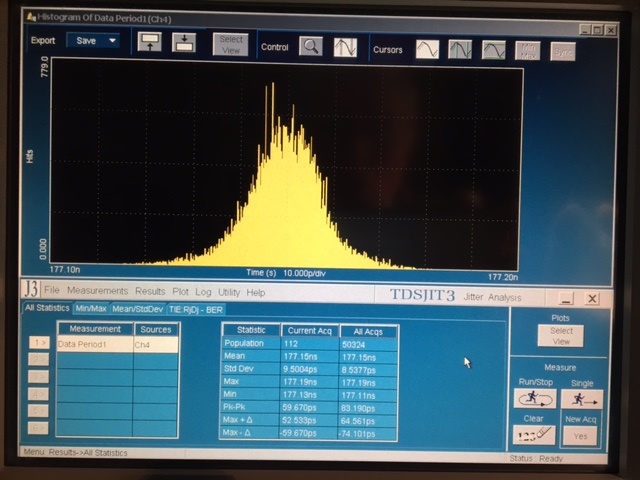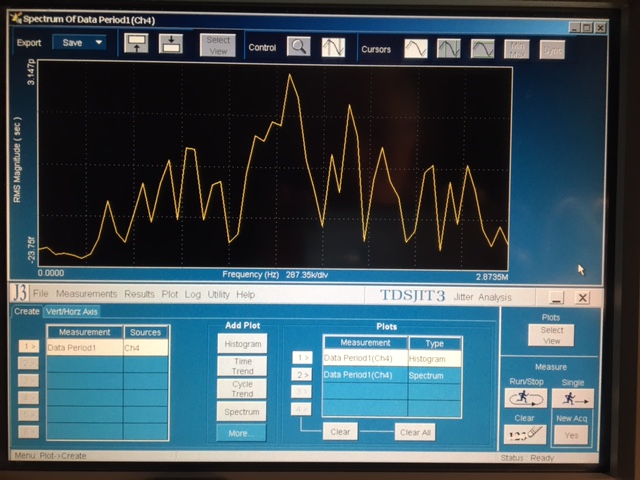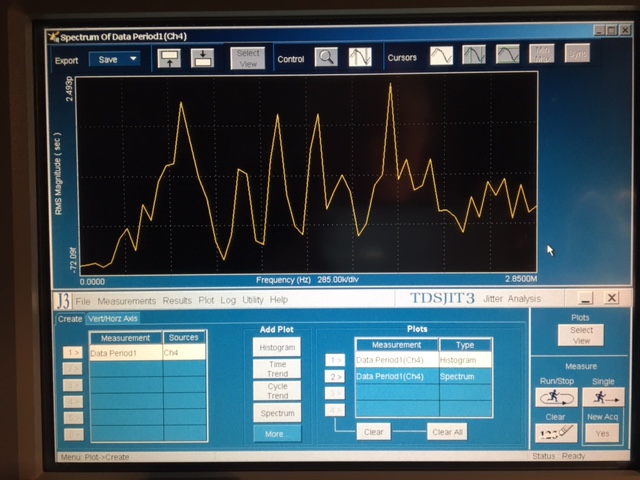Empirical Audio has designed what we believe to be the best performing USB and Ethernet interfaces. Both are available as DAC inputs as well as external converter devices. The Interchange is our external Ethernet device and the Off-Ramp 6 is our external USB device. The XMOS USB interface is galvanically isolated and by virtue of the Ethernet PHY, the Ethernet is also galvanically isolated. Both interfaces are based on the same design, with the same clocking from our "Turboclock". Both use the same power supply, the Dynamo. The Master Clocks in the Off-Ramp 6 are both galvanically isolated from the USB cable. The power in the USB cable is provided by another device of ours, the Power Block, so power from the computer in the USB cable is not utilized. The Interchange is available as a product, but the Off-Ramp 6 is not available yet.
We set up the measurement testbed so that both devices would be located in the same place and use the same power outlets and the same digital output (S/PDIF coax) and power cables. The input USB cable was a 16-foot off-the-shelf inexpensive cable and the Ethernet cable was about 40 feet of CAT5e and CAT6, some in the wall and some as a CAT6 pluggable cable. The 16-foot USB cable was run from a Mac Mini that is optimized for audio playback. The Mini has both Amarra and Jriver for playback software. Both will be used for listening tests, but using shorter more optimum cables.
Jitter measurements are made using a 7GHz Tek scope with advanced Jitter Measurement software app on it. All units were given 30 minutes to warm-up and stabilize.
Measurements:USB jitter distribution:

Ethernet jitter distribution:

The jitter distribution from USB is a bit wider, but still in the noise. We are talking 23psec of jitter versus 18psec of jitter from the Ethernet interface.
USB jitter spectrum:

Ethernet jitter spectrum:

Again, these are both similar. Below 600kHz, the jitter is essentially non-existant.
Listening tests:For USB, listening tests were .wav files played from both Amarra and Jriver from the Mac Mini. Memory playback mode selected for both.
For Ethernet, listening tests used the same files played from Jriver from the Mac Mini.
Tracks included 44.1 tracks of:
1) The Doors "Riders on the Storm" - listening for the rain, thunder and vocals
2) Pat Metheney "Half Life of Absolution" - percussion, electric guitar
3) Michael Hedges "Rickovers Dream" - acoustic guitar
4) Andreas Vollenweider "Behind the Gardens/Behind the Wall/Under the Tree" - paddling canoe in a swimming pool and harp
Ethernet impressions:
Very clear, but not dry. Highest frequencies remain coherent and attached with high degree of focus to their sources, be it rain, percussion or water being paddled. Acoustic guitar sounds are very live and pinpoint focused. Liveness is almost startling at times.
USB impressions:
Very bold, vivid and almost glowing. Virtually identical results from Amarra and Jriver. Highest frequencies are a bit confused, causing the guitar to be a bit unfocused or at least the highest frequencies are not firmly attached to the same lower frequency sounds. Almost like an overly echoic chamber. Still very pretty sounding though and nothing is being missed. You still hear every detail. The highest frequencies are only a bit misplaced in the sound-field. If your system was not set-up to deliver a pin-point image, you might not hear this difference. It is subtle, but audible enough so that you know this is a recording and not the real McCoy.
These differences are small and require critical listening with optimum tracks to hear the differences. With certain instruments however, it's the difference between a "live in the room with you" sound and a "pretty" sound from a recording.
So, if the jitter measurements do not show a significant difference, what is going on? Could it be that I need a really expensive USB cable to get these high-frequencies to be coherent? This is the only hardware variable that I can think of. Other than this, I have to deduce that somehow USB is "tainting" the data somehow.
Even if a $2K USB cable would fix this, why would I waste my money on that? I spent maybe $25 on CAT7 cables and $130 for an isolator for Ethernet.
I have an extensive list of reasons why I prefer Ethernet to USB, but this is the one that counts, sound quality, liveness. The second reason is that there are less hoops to jump through and less additional expenses to achieving that accurate, live sound.
Steve N.